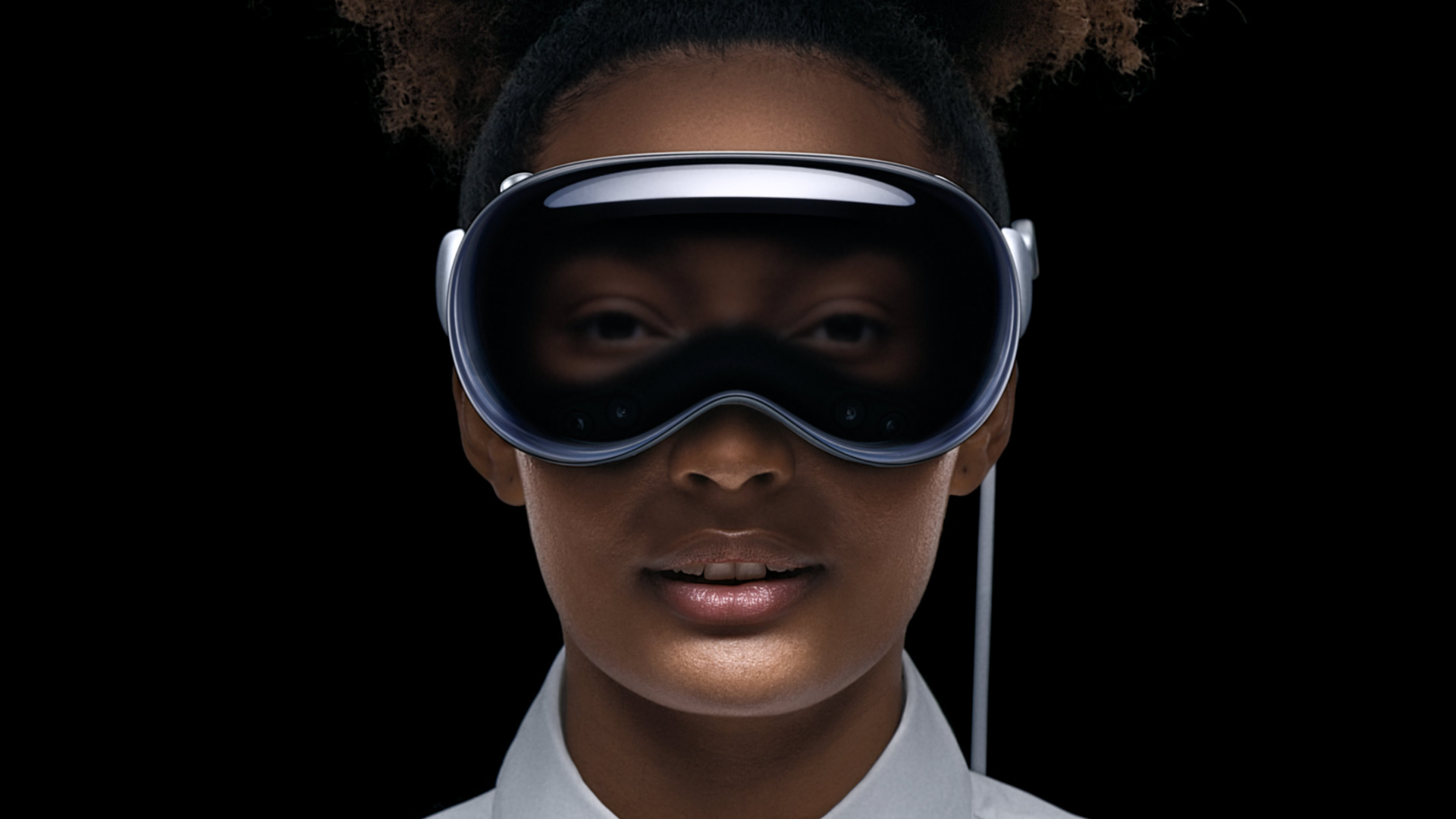Apple's Vision Pro might let you feel different textures with a future accessory
Feel the virtual world at your fingertips.

Apple has recently been granted a patent for finger devices and accessories designed to let you 'feel' virtual sensations, movements and textures.
According to Patently Apple, these finger-mounted accessories have a U-shaped design to fit over your fingers and will work with head-mounted displays, like the Apple Vision Pro, but could also sync up to other devices, like TVs and Macs.
Right now the Apple Vision Pro – and other VR and AR headsets, like the Meta Quest Pro – use small cameras to pick up finger gestures that are then translated in virtual spaces. But devices that could be worn directly on your fingers would be able to add wearable sensors, leading to more accurate tracking and more features.
In fact, Apple has detailed a whole range of sensors that could be added to the accessories, like an accelerometer, a force sensor, microphones, proximity sensors, ambient light sensors, muscle activity sensors — the list goes on.
Hooked on a feeling
But the most exciting part of the patent details some of the haptic tech that could also be fitted into the finger devices. Haptic tech essentially replicates touch and any feeling sensations. Think the way you'd feel a vibration or rumble from a games controller, but much more targeted and advanced.
So with haptic tech inside finger devices you could ‘feel’ vibrations, virtual textures, motion and any other tactile sensation. As you can imagine, this would enable you to interact with virtual content in a much more realistic way.
Maybe you feel a virtual cat brush up against your fingertips or feel virtual water run over the back of your hand or feel just the right amount of pressure when you virtually high-five your friend's avatar in a virtual meeting spot. You get the idea.
Master your iPhone in minutes
iMore offers spot-on advice and guidance from our team of experts, with decades of Apple device experience to lean on. Learn more with iMore!
Haptic tech designed for your hands already exists – like the HaptX haptic gloves. And Apple has already filed several patents in the past concerned with finger-sensing thimble controllers and finger sensors for VR long before the Apple Vision Pro was even announced.
It's easy to see why this is so important. For VR and AR to capture mainstream attention, sensing the way your hands and body move in real space and translating that to a virtual one is imperative. If you move your hand in real life and see a lag or an awkward arm glitch in VR it's annoying, not to mention a little disconcerting.
And that's only part of it. Providing that all-important touch feedback is going to be vital for making people feel more immersed, matching up what they might see through a headset like the Apple Vision Pro with what they can then actually feel. What we're saying is, it makes sense that the race to control your fingertips is such an important one.

Becca Caddy is a contributor to iMore, as well as a freelance journalist and author. She’s been writing about consumer tech and popular science for more than a decade, covering all kinds of topics, including why robots have eyes and whether we’ll experience the overview effect one day. She’s particularly interested in VR/AR, wearables, digital health, space tech and chatting to experts and academics about the future. She’s contributed to TechRadar, T3, Wired, New Scientist, The Guardian, Inverse and many more. Her first book, Screen Time, came out in January 2021 with Bonnier Books. She loves science-fiction, brutalist architecture, and spending too much time floating through space in virtual reality. Last time she checked, she still holds a Guinness World Record alongside iMore Editor in Chief Gerald Lynch for playing the largest game of Tetris ever made, too.
